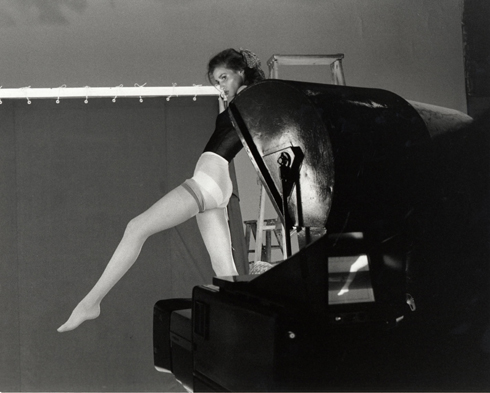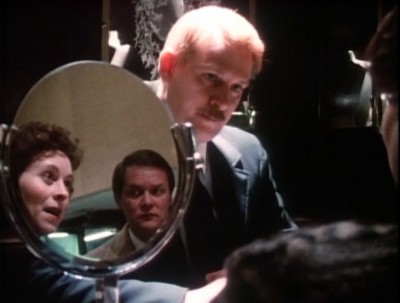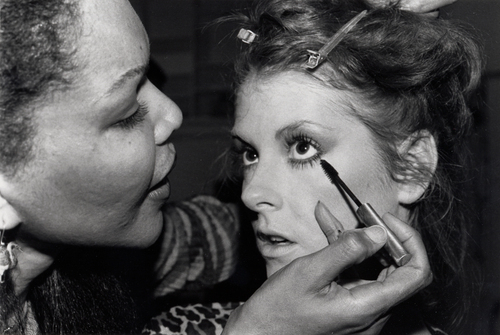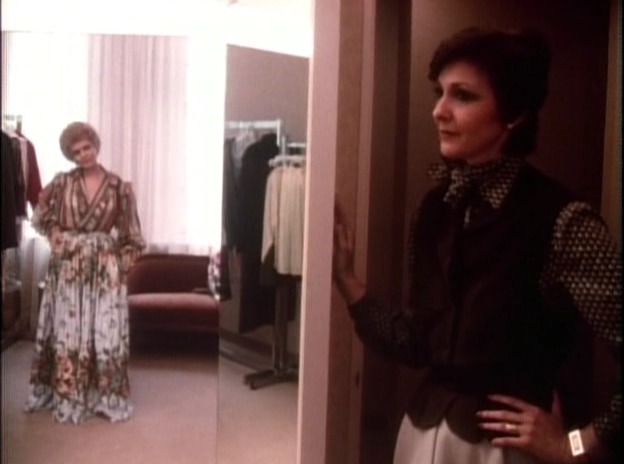SINCE 1967, FILMMAKER FREDERICK Wiseman has produced an enormously influential and insightful series of documentaries. Over the course of some forty films, he has taken viewers inside an insane asylum (‘Titicut Follies‘), uncovered the workings of the welfare system (‘Welfare‘), witnessed terminal patients on a hospital ward (‘Near Death‘) and victims of spouse abuse (‘Domestic Violence‘). His most recent film, ‘At Berkeley‘, about the University of California at Berkeley, has just been released. In the early 1980s, he trained his lens on the fashion system to make ‘Model‘ (1980), about the Zoli modeling agency in New York, and ‘The Store‘ (1983), set at the Neiman Marcus flagship store in Dallas. Wiseman is typically cryptic in interviews, and won’t analyse the themes in his films; that’s the viewer’s job. My own interview with the filmmaker was no exception. (I asked, for example, why both films feature a singing telegram. ‘Perhaps it is better if you answer the question,’ he replied.) Our exchange did, however, reveal how his rigorous aesthetic was applied to fashion – like every other institution in his inimitable series.
All Wiseman films are odd. Stubbornly original. Iconoclastic. (‘Near Death‘ is six hours long.) Without music, narration, or staged interviews, they force the viewer to constantly interpret their meanings. Sometimes it’s a struggle. ‘Model‘, for example, contains an extremely long and detailed sequence about the filming of an Evan Picone commercial. Novelist William T. Vollmann writes of this scene: ‘That model descending the steps excites my pity when I see her being made to do it over and over again. Life, so I want to think, should not be like that. It should be “spontaneous.” Or should it?’ Here Vollmann bursts out in exasperation, ‘What does Wiseman want me to learn?’1

But it’s worth the effort. Though there has been a string of critically praised fashion documentaries recently (‘Valentino: The Last Emperor‘; ‘Bill Cunningham New York‘), nothing quite like ‘Model‘ exists. A comparison to ‘The September Issue‘, a highly regarded fashion documentary, brings Wiseman’s work sharply into focus: The film featured a human protagonist (Anna Wintour), an antagonist (Grace Coddington), within a conventional narrative arc. Wiseman films have none of these. In ‘The Store‘, we are instead confronted with a Rorschach ink blot – seemingly mundane images of shoppers sifting through merchandise, a sales associate’s awkward birthday celebration, and merchandising strategy meetings (‘We’re in Neiman Marcus for one reason and one reason only – and that’s to make sales,’ one VP remarks, unwittingly providing the key to the film). The protagonist of ‘The Store‘ is the store itself, carefully observed in a document that is deeply meditative, absorbing and mesmerising.

Wiseman’s films prior to ‘Model’ had stark subjects: welfare recipients, insane asylum inmates – yet when I spoke to him, Wiseman told me his fashion films weren’t necessarily a thematic departure: ‘I am trying to make films about as many different aspects of contemporary life as I can. Documentary film does not have to be restricted to films about poor or exploited people.’ Furthermore, the editing process is a crucial aspect of Wiseman’s work, since his documentary style is so unobtrusive, filming for long periods of time observing his subjects, I was interested to know if any sequences in ‘Model‘ and ‘The Store‘ surprised in this process, emerging as more significant than he’d realised during filming. He explained further, that ‘It is all a surprise since I know very little about the subject before I begin shooting. The idea is that the film should at least in part show what I learned as a consequence of the shoot and the long period of editing.’

Both films have been interpreted as Marxist critiques. Author Dan Armstrong, for example, argues that ‘Model‘ ‘examine[s] contemporary American class struggle from the perspective of the ideological and cultural hegemony of the Professional Managerial Class over the subordinate working class.’2 Yet if Wiseman held any particular animus toward fashion, his description of how he selected his quarry sounds blameless, almost random: ‘I did not make a list of all the possibilities in the fashion world. The idea of a model agency appealed to me. I contacted Zoli and he agreed. I knew something of Neiman Marcus’s reputation and thought it would be a good choice.’ Likewise, the decision to shoot ‘The Store‘ in colour (all the previous films were made in black and white) was practical, not strategic: ‘I thought it was important to show the colour of the products sold. Also, the quality of the picture is better in colour when you are shooting in low light.’

Wiseman’s mandarin responses remind us of his mandarin films. Seemingly simple and direct, they provide endless opportunities for reflection and are surprisingly open-ended. While Armstrong makes an excellent point about ‘Model‘, for example, the film also documents the exacting work of making advertisements, something we’re prone to overlook. If ‘The Store‘ is about an engine of commerce that exploits consumers, the consumers in the film are collaborating with that process.
Neither ‘Model‘ nor ‘The Store‘ is a simple satire of fashion. In fact, Wiseman reminds us, nothing is simple. The films instead represent a unique way of thinking about our field, as subjective and expansive as any great work of art can be.
‘The Store’ and ‘Model’ are available from Frederick Wiseman’s production company, Zipporah Films.
Alexander Joseph is a freelance writer and editor in fashion.
W Vollman, ‘In Memory of Us All: Some Scenes Out of Wiseman,’ in Frederick Wiseman, The Museum of Modern Art, New York, 2010, pp. 69-76. [Note: Italics are Vollman’s.] ↩
D Armstrong, ‘Wiseman’s ‘Model’ and the Documentary Project: Toward a Radical Film Practice,’ in Film Quarterly, California, University of California Press, Vol. 37, No. 2 (Winter 1983-1984), pp. 2-10. ↩